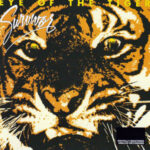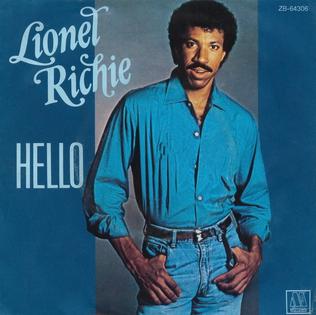Few songs in the history of rock music have achieved the universal recognition and enduring influence of “Eye of the Tiger” by Survivor. Released in 1982, this hard-charging arena rock classic became an instant sensation, driving the adrenaline of millions with its unmistakable opening riff and lyrics of determination. It’s a song that transcended its origins as a movie soundtrack to become a rallying cry for perseverance, ambition, and the will to overcome adversity. More than four decades later, “Eye of the Tiger” still packs a knockout punch. To fully appreciate its impact, we need to explore the story behind the song, its musical architecture, its massive cultural footprint, and the way it continues to inspire generations.
The Rocky Beginning: How “Eye of the Tiger” Was Born
The creation of “Eye of the Tiger” begins with an unlikely collaboration between a Hollywood action hero and a hardworking Midwestern rock band. In the early 1980s, Survivor—formed in Chicago by guitarist Frankie Sullivan and keyboardist Jim Peterik—were a talented but relatively unknown group. They had released two albums with modest success, but they were far from household names.
Enter Sylvester Stallone, who was preparing to release Rocky III. Stallone needed a powerful theme song to match the movie’s storyline. Initially, he wanted to use Queen’s “Another One Bites the Dust,” but when permission was denied, he went searching for something original. Having been impressed by Survivor’s 1981 single “Poor Man’s Son,” Stallone personally approached the band to write a new track for the film.
He sent the band a rough cut of Rocky III, which featured the return of underdog boxer Rocky Balboa as he faces a fierce new rival, Clubber Lang (played by Mr. T). Watching the footage of Rocky’s grueling training sessions and the climactic fight, Sullivan and Peterik understood the assignment: they needed to create a song that captured the intensity of a fighter’s spirit. The result was “Eye of the Tiger,” a track designed to mirror Rocky’s relentless drive to reclaim his title.
The Sound of Survival: Anatomy of a Classic
The reason “Eye of the Tiger” remains so electrifying lies in its precise construction. From the very first second, the song grabs listeners by the collar and refuses to let go. Let’s break down the key elements that make this anthem so enduring.
The Riff
The opening guitar riff, played by Frankie Sullivan, is one of the most recognizable in rock history. Built on a palm-muted, chugging pattern, it conveys tension, power, and forward motion. Like a boxer’s heartbeat or the rhythm of skipping rope in the gym, it sets the stage for the fight ahead. Simple but unforgettable, this riff became the song’s calling card and remains a staple for guitarists learning the fundamentals of rock.
The Rhythm Section
Bassist Stephan Ellis and drummer Marc Droubay create a tight, muscular groove that drives the song forward like a freight train. The drumming is crisp and insistent, while the bass line adds a low-end punch that reinforces the riff’s sense of urgency. Together, they provide the relentless engine that keeps the song in motion.
The Vocals
Lead singer Dave Bickler delivers the lyrics with a gritty determination that perfectly fits the song’s theme. His slightly raspy tone adds an edge of toughness, while his powerful phrasing injects the lyrics with an almost cinematic urgency. Lines like “Rising up, back on the street / Took my time, took my chances” sound less like lyrics and more like a battle cry.
The Lyrics
Jim Peterik’s lyrics are a masterclass in motivational writing. The “eye of the tiger” is a metaphor for focus, courage, and survival. It’s about facing challenges head-on, rising to the occasion, and refusing to back down. The chorus—“It’s the eye of the tiger, it’s the thrill of the fight / Rising up to the challenge of our rival”—is universal enough to resonate with athletes, workers, students, and anyone who needs a dose of inspiration.
The Production
Produced by Frankie Sullivan and Jim Peterik, the song is lean and muscular. Unlike some of the heavily synthesized rock hits of the era, “Eye of the Tiger” relies on classic rock instrumentation—guitars, bass, drums, and just a touch of keyboards for texture. This stripped-down approach keeps the focus on the raw energy of the performance, ensuring it sounds just as powerful today as it did in 1982.
The Perfect Match: “Eye of the Tiger” in Rocky III
When Rocky III debuted in May 1982, “Eye of the Tiger” was front and center. The song plays during the film’s training montage and fight sequences, perfectly underscoring Rocky’s struggle to regain his edge after being defeated by Clubber Lang. The pounding beat matches the rhythm of the punching bag, the running footsteps, and the clanging of gym equipment. The lyrics reflect Rocky’s internal journey from complacency to renewed determination.
The synergy between song and film was immediate and undeniable. Audiences left theaters humming the riff, and radio stations quickly jumped on the track. The song became inseparable from the Rocky franchise, embodying the same themes of grit, redemption, and perseverance that made the films so beloved.
Chart Domination and Global Success
“Eye of the Tiger” wasn’t just a movie hit—it was a commercial juggernaut. Released as a single in June 1982, it rocketed to No. 1 on the Billboard Hot 100, where it stayed for six consecutive weeks. It also topped charts in the United Kingdom, Australia, Canada, and several other countries, eventually selling millions of copies worldwide.
The song earned Survivor a Grammy Award for Best Rock Performance by a Duo or Group and an Academy Award nomination for Best Original Song. It also received a Golden Globe nomination and has since been certified multi-platinum. For a band that had previously struggled to break into the mainstream, this was a career-defining triumph.
More Than a Soundtrack: A Cultural Phenomenon
While “Eye of the Tiger” began as a theme for a single movie, it quickly escaped those confines to become a universal anthem of motivation. Its driving beat and empowering lyrics made it a natural fit for sports events, workouts, and any situation where people need a surge of energy. From professional athletes to high school marching bands, the song has been used to inspire peak performance in countless settings.
Sports teams blast it before games. Boxers and MMA fighters use it as entrance music. Coaches play it in locker rooms to fire up their players. It’s a staple in gyms around the world, appearing on countless workout playlists and fitness videos. The song’s universal message—fight back, stay strong, don’t quit—transcends generations and languages.
Survivor’s Own Battle for Success
Interestingly, the song’s title and message mirrored Survivor’s own career. Before “Eye of the Tiger,” the band had experienced the ups and downs of the music industry without achieving widespread recognition. They were, in many ways, fighting for survival in a competitive rock landscape dominated by giants like Journey, REO Speedwagon, and Foreigner. The success of “Eye of the Tiger” was their knockout punch, propelling them into the upper echelon of rock acts.
Yet success brought its own challenges. The band faced the pressure of living up to their massive hit, and while they would go on to score other successes—most notably “Burning Heart,” featured in Rocky IV—nothing would quite match the cultural impact of “Eye of the Tiger.” The song became both a blessing and a burden, defining Survivor’s career while overshadowing much of their other work.
The Riff That Refuses to Die
At the heart of “Eye of the Tiger” lies that unforgettable riff. Its power lies in its simplicity. Four decades after its debut, it remains one of the first riffs aspiring guitarists learn, a rite of passage for anyone picking up a six-string. It’s been featured in commercials, TV shows, movies, and countless parodies, each one reinforcing its place in popular culture.
The riff’s adaptability has also kept the song alive in new contexts. It works as a motivational backdrop for everything from political rallies to charity events. Even when used humorously, it retains its original sense of urgency, a musical shorthand for “let’s get to work.”
Covers, Parodies, and Tributes
Few songs have been covered and parodied as widely as “Eye of the Tiger.” Marching bands blast it at football games. Choirs give it a gospel spin. Metal bands turn up the distortion and deliver it with thunderous aggression. Pop singers reinterpret it with stripped-down acoustic arrangements. Animated shows like Family Guy, The Simpsons, and South Park have all referenced it, sometimes to poke fun at its over-the-top bravado, but always acknowledging its iconic status.
The song’s appearance in everything from commercials to comedy sketches ensures that new generations continue to discover it. Even those who have never seen Rocky III instantly recognize the opening notes, proving that “Eye of the Tiger” has long since transcended its original purpose.
Eye of the Tiger in the Modern Era
Today, “Eye of the Tiger” stands as more than just a relic of the 1980s. Its message of resilience feels timeless and, if anything, more relevant in an era where personal and collective challenges are constant. Whether used to motivate someone during a tough workout, inspire a team before a big game, or simply give someone the courage to face a difficult day, the song’s spirit remains as vital as ever.
The band, though no longer at their commercial peak, continues to perform the song in concerts, embracing its legacy with pride. For audiences, hearing “Eye of the Tiger” live is an electrifying reminder of its enduring power.
Why “Eye of the Tiger” Endures
What makes “Eye of the Tiger” more than just another 1980s rock hit? It’s the way it taps into something primal and universal. At some point, everyone faces a challenge that feels like a fight for survival. The song gives that struggle a voice. Its driving beat mimics the rhythm of determination. Its lyrics provide a simple but profound message: stay focused, stay hungry, and never give up.
Unlike many of its contemporaries, the song avoids dated production trends. There are no flashy synthesizers or overly processed effects—just guitars, bass, drums, and a passionate vocal performance. This classic rock foundation ensures that it continues to sound fresh even decades later.
Final Bell
More than forty years after its release, “Eye of the Tiger” by Survivor remains one of the most recognizable and motivational songs ever recorded. Born from the needs of a boxing movie but destined for something much greater, it has become a cultural touchstone, a musical embodiment of resilience and determination.
From gyms to stadiums, from school talent shows to international sporting events, the song still inspires people to rise up and meet their challenges head-on. Survivor may have written it for Rocky Balboa, but its message belongs to everyone. Whether you’re climbing a mountain, training for a marathon, or simply trying to push through a tough day, the roar of the tiger is there to remind you: the fight isn’t over, and victory belongs to those who refuse to quit.
That’s the enduring power of “Eye of the Tiger”—a song that will forever keep hearts pounding, fists pumping, and spirits unbreakable.



